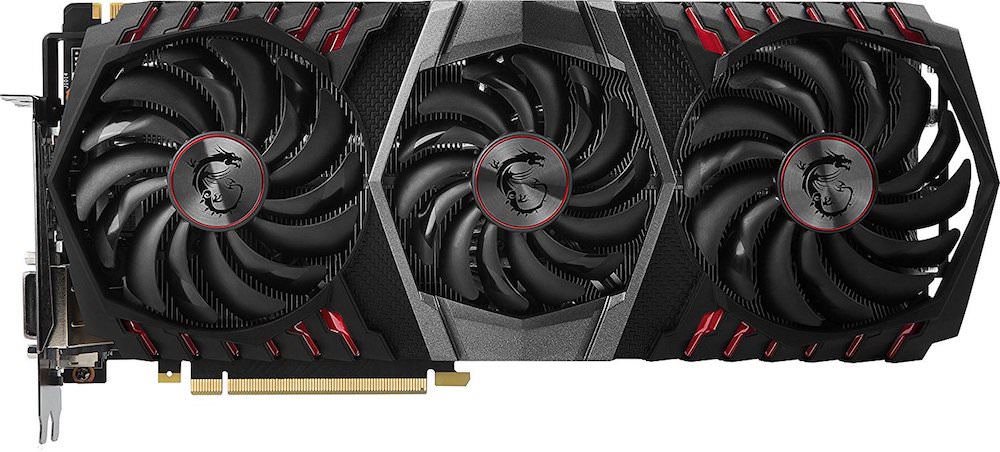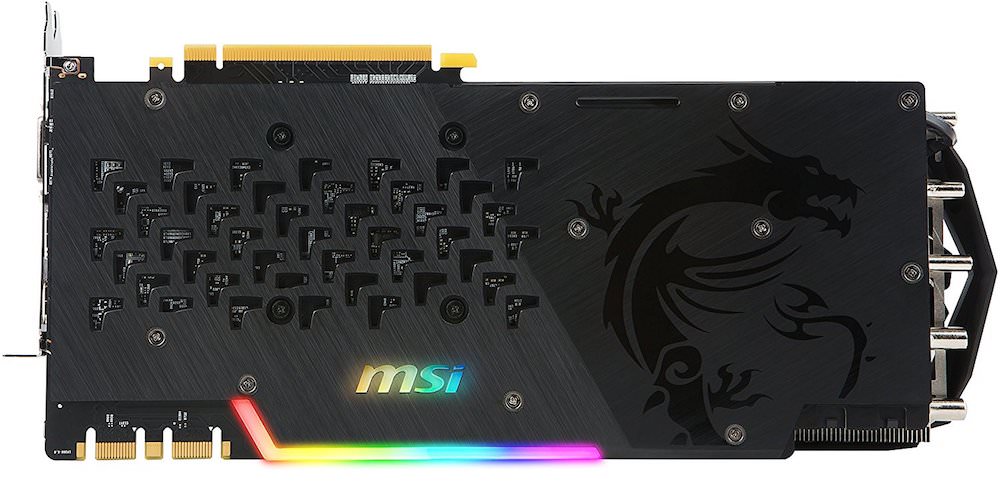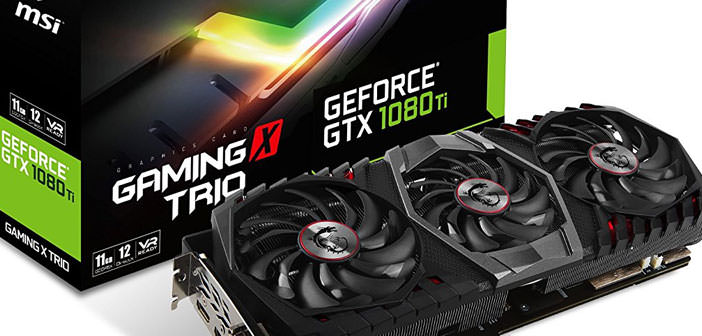MSI presents two new GeForce GTX 1080 Ti Gaming: TRIO and X TRIO
Both, given the segment they cover, have been equipped with the best MSI technologies: three-fan heatsink, Mystic Light RGB LED lighting, improved thermal design and Military Class certified components.
MSI announces two new video cards, based on GeForce GTX 1080 Ti, which are going to pose themselves as new hi-end solutions from the Taiwanese manufacturer: let’s talk about the models of the Gaming series precisely the TRIO version and the more thrust X TRIO.
Both, given the segment they cover, have been equipped with the best MSI technologies: three-fan heatsink, Mystic Light RGB LED lighting, improved thermal design and Military Class certified components.
 The cooling system, the same for both new models, is the one called TRI-FROZR, based on the adoption of two 10 cm fans and a 9 cm central unit, all of the TORX 2.0 series, as regards the actual heatsink, we find two 8 mm SuperPipes flanked by another four smaller heatpipes, all dimensioned to transfer the heat from the GPU to the fins as quickly as possible, guaranteeing a correct disposal up to values around 300 W. Between the two identical versions also the connector compartment, consisting of two DisplayPort 1.4, two HDMI v2.0 connectors and a single DL-DVI-D connector.
The cooling system, the same for both new models, is the one called TRI-FROZR, based on the adoption of two 10 cm fans and a 9 cm central unit, all of the TORX 2.0 series, as regards the actual heatsink, we find two 8 mm SuperPipes flanked by another four smaller heatpipes, all dimensioned to transfer the heat from the GPU to the fins as quickly as possible, guaranteeing a correct disposal up to values around 300 W. Between the two identical versions also the connector compartment, consisting of two DisplayPort 1.4, two HDMI v2.0 connectors and a single DL-DVI-D connector.
 The two boards are also similar in appearance and dimensions, 325x140x48 mm and a total weight of 1,484 g; the differences are shown only by sifting through the data sheet and going to see the factory set operating frequencies:
The two boards are also similar in appearance and dimensions, 325x140x48 mm and a total weight of 1,484 g; the differences are shown only by sifting through the data sheet and going to see the factory set operating frequencies:
MSI GeForce GTX 1080 Ti Gaming TRIO
Core Clock
- 1,620 MHz / 1,506 MHz (OC Mode)
- 1,607 MHz / 1,493 MHz (Gming Mode)
- 1,582 MHz / 1,480 MHz (Silent Mode)
Memory Clock
- 11,016 MHz (OC/ Gaming / Silent )
MSI GeForce GTX 1080 Ti Gaming X TRIO
Core Clock
- 1,683 MHz / 1,569 MHz (OC Mode)
- 1,657 MHz / 1,544 MHz (Gaming Mode)
- 1,582 MHz / 1,480 MHz (Silent Mode)
Memory Clock
- 11,124 MHz (OC Mode)
- 11,016 MHz (Gaming / Silent )
 A more step-by-step reading for the frequencies of the X TRIO card that stands out from its younger sister for having undergone a retouching even at the frequency of memories in OC Mode, which usually, even on the best-performing models, stands on ” standard ” values.
A more step-by-step reading for the frequencies of the X TRIO card that stands out from its younger sister for having undergone a retouching even at the frequency of memories in OC Mode, which usually, even on the best-performing models, stands on ” standard ” values.

